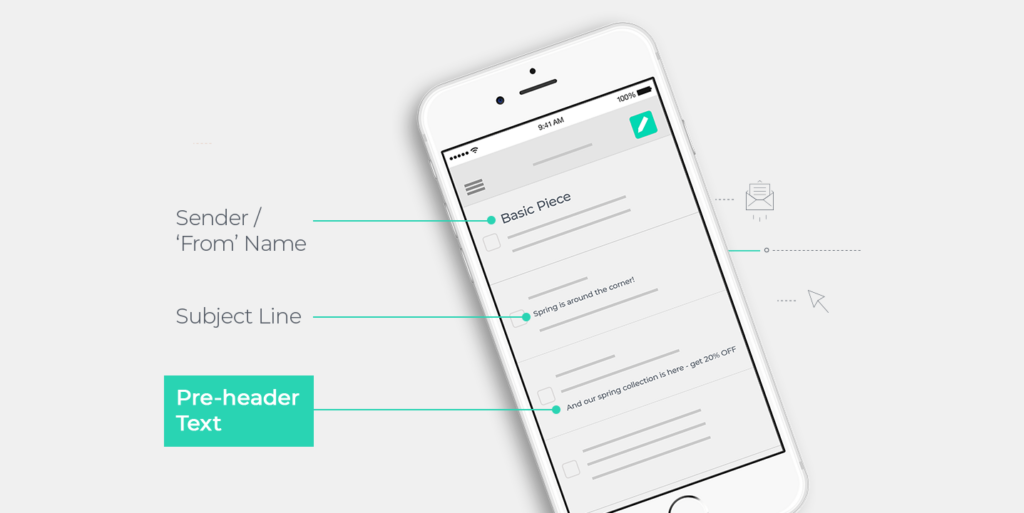20 times a day — that’s how often people on average check their email. Sounds like a lot, but in reality emailing has become so ingrained in our everyday routines. Whether email is the first thing you check when you wake up, in line at the coffee shop, or multiple times during the workday it is a key aspect of our personal and professional lives. Hence, the importance of email marketing. Seems like a no-brainer–sales and marketing outreach is a natural fit for email inboxes. So why are your email performance metrics dwindling?
The prevalence of emails is a double-edged sword. Yes, email is an undeniably popular form of communication. However, this means inboxes are being constantly flooded. On average people receive 121 emails a day. This heightens the challenge of effective email marketing but does not dilute the significance of email marketing. It’s the most popular channel for business communications and the reliable channel for nurturing and converting leads to sales throughout the funnel. Many It is a tricky, but highly rewarding digital marketing platform. The nuances of email marketing and widespread frustration with stagnant performance metrics have led Bluetext to identify the 5 most common email marketing mistakes and how to improve your email performance metrics.
1. Subject Line Skepticism
One of the most challenging aspects of email marketing is the subject line — this is the hook that entices a user to either open your message, or ignore it entirely. When your inbox is being constantly flooded with marketing emails it can become second nature to simply ignore or mark a promotional email as spam. However, a strong and attention-grabbing subject line can dissuade a user from these practices and pay attention to your messages. Below are some of the most common subject line faux pas:
- Too wordy – your subject lines need to be short, sweet, and pack a punch. Think about all the words on your average inbox interface, there’s a lot! In a 5 second scan, your subject line should jump out with concentrated keywords. The highest open rates occur with subject lines 6-10 words in length. This keeps the full message readable in the line item without truncating with those dreaded … A subject line doesn’t need to contain entire sentences, or detail every piece of content inside. Instead, try a catchy phrase or question to spark curiosity, which instantly drives engagement.
- SPAM Red Flags – subject lines written in all caps immediately sound the alert for SPAM filters – both by the reader and email system!
- Pre-Header Connection – subject line and pre-header text are two key elements of any email that when used effectively form a dynamic duo. Both are prime opportunities to capture attention and prompt an open, thus need to complement one another. Strive for subject lines that briefly describe what the message is about, and a pre-header provides important context. Together they form a cohesive narrative that gives a sneak peek, driving the reader’s engagement.

2. Forgetting the Filters:
Keep in mind the success of your email marketing campaign hinges on two parties: the recipient and their email provider’s SPAM filters. More often than not marketers concentrate on the human reader and forego considerations of the automated filter system. To avoid getting trafficked to SPAM folders, watch out for the use of these warning signals: clickbait phrases, all caps, overuse of “you” and “I” pronouns, and listicles. Email providers most commonly scan content on the following levels:
- Header filters – look for spam indicators in email subject lines and pre-headers (for example clickbait phrases, all caps)
- Content filters – crawl the content of the email to find spam indicators
- General backlist filters – use the database of spammers to determine if the email is clickbait
- Permission filters – ask the reader for confirmation before opening the email
3. Over Genercism:
Personalization is key and leads to 25% higher open rates. In any aspect of digital marketing, it’s important to recognize basic human psychology: people want to feel special. Whether that’s by seeing their pain points addressed, persona-based navigation, or even as basic as being addressed by name. Personalizing emails with first and last names is a simple, but effective way to grab the reader’s attention and qualm the suspicion of copy-and-paste clickbait. Additionally, the overuse of first-person pronouns is a trigger for SPAM filters. Consider adding their name to a subject line (ex. John, your system needs updates” or at the least beginning the body copy with a personalized greeting “Hi John Doe,”. With this approach, your email immediately feels like a one-to-one conversation and less of a robotic one-to-many outreach.
4. Unclear Call-to-Action:
Let’s backtrack: the goal of your email is to guide your subscribers from opening an email to going to a landing page where they can learn more information about a promotion, request a demo, or contact you. Your email marketing strategy is aimed at turning leads into prospects, and eventually customers. Getting users to open your email is half the battle, the other half is guiding them to conversion. Don’t make a reader dig through email content to find the end goal. Add a CTA or landing page link to the beginning and end of an email body, in the event that the user does not read the entire message. A CTA stands for “calls to action” for a reason — they should be action-orientated and exciting! Experiment with different language that goes beyond the boring “Learn More” to inspire clicks. Perhaps try a stylized button to really catch the eye. The most important aspect is to be cautious of burying your CTA, if it can’t be found in a 5-10 second scan chances are your reader will give up and forgo the opportunity.

5. Ignoring the Technicalities:
Before getting into all the bells and whistles of your content strategy, set yourself up for success with a strong foundation. Deliverability of your emails is crucial to getting your foot in the door with your messages. About 10% of emails never even reach inboxes due to bounces, SPAM filters, or other technical issues. Most email service providers (ex. Marketo, Pardot, HubSpot) systems have built-in functions to assist with technical evaluation of domain authority, IP reputation, and email testing before you hit send. On a regular basis, you should be checking the health of your email systems, removing inactive subscribers, and analyzing important deliverability & bounce metrics.
As you can see there’s a lot to consider within your email marketing strategy. It’s a tricky path to navigate, but when done right, is a powerful digital marketing tool.
Need to uplevel your email marketing strategy? Contact Bluetext to learn more about our services.